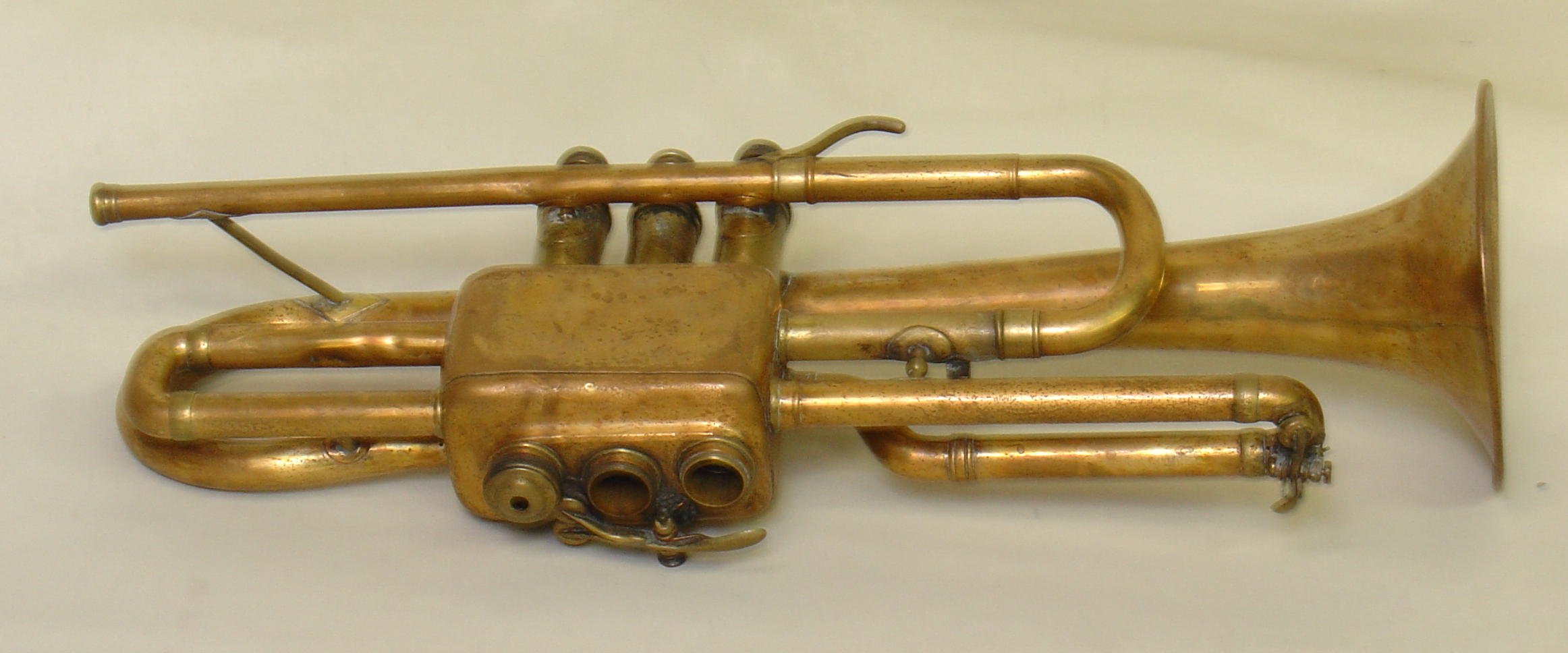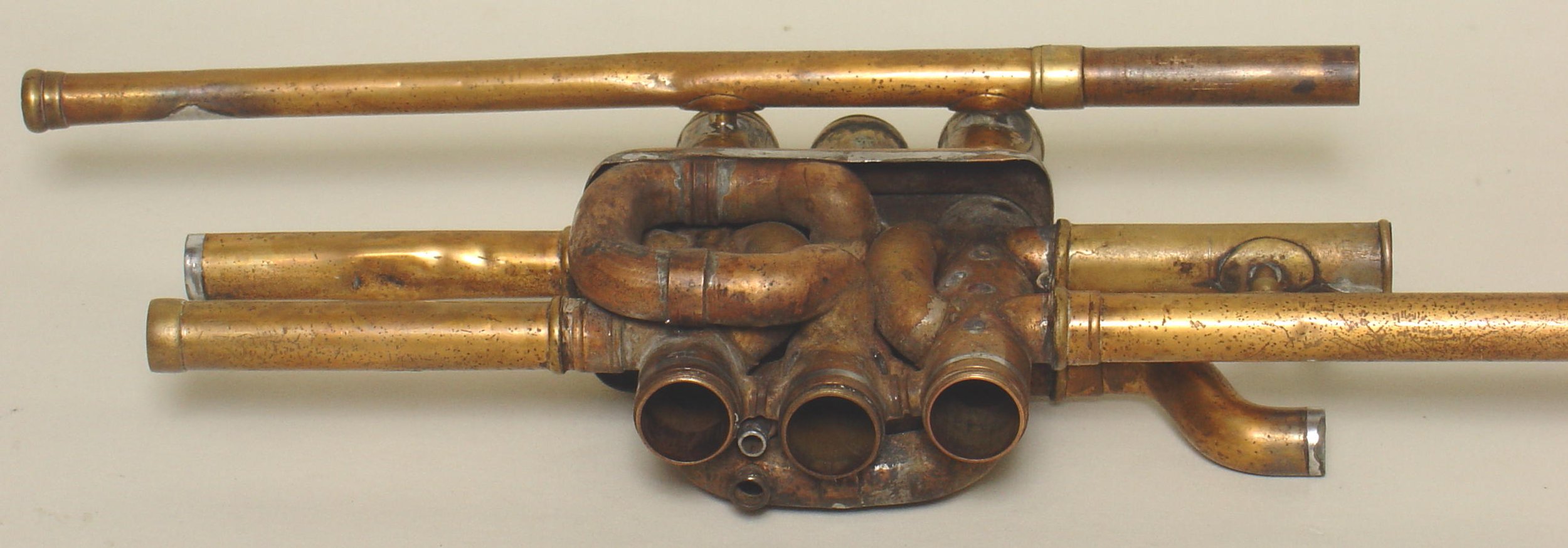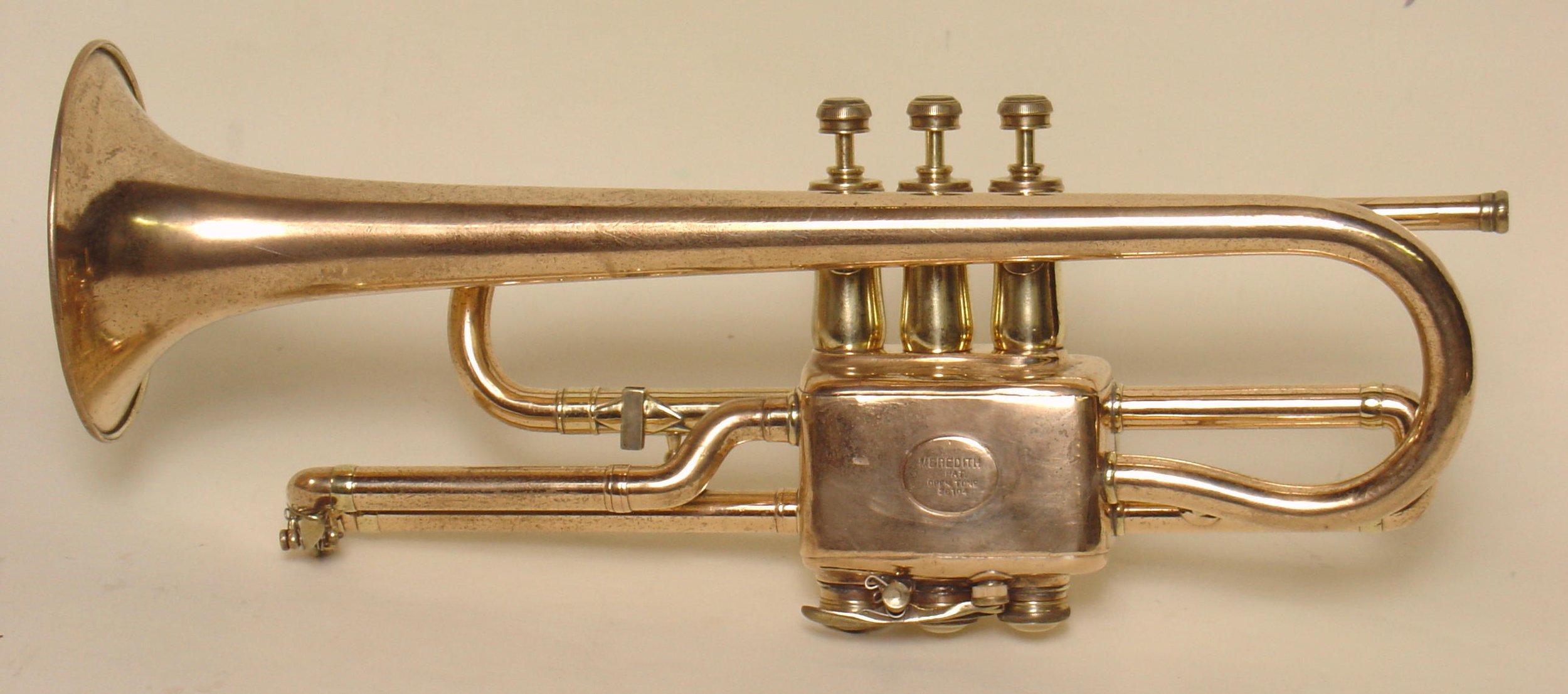Bb Trumpet by Z. Albert Meredith
Z. Albert Meredith was a well known and successful cornetist in his time, but is mostly remembered as a maker of "Open Tone" cornets using his patented valve designs. The cornet design evolved through three patents, the first involved two bells (one of these prototypes still exists), the second removed the need for the second bell and the third refined the design into what we see on virtually all of the cornets that he produced. Several of the best examples can be seen in VintageCornets.com.
The concept is to remove constrictions and sharp curves in the pistons and having the air column passing through valve crooks whether the valves are up or down and is very similar to Conn's 1877 patent that he abandoned in the 1880s.
Meredith had started production in about 1907 in Marion, Ohio and is thought to have learned the trade while working for Buescher before that. Like John Heald, Meredith seems to be somewhat of a mad genius, producing relatively small numbers of high quality instruments with playing qualities just a little better than the best of the more popular instruments.
In 1932, Meredith moved to Long Beach, California, continuing to build even smaller numbers of cornets and trumpets, but mostly surviving on the repair business. It is believed that this trumpet was made in the early 1950s, after my mentor, Don Heaston went to work in this shop.
This instrument adds a few more quirks to the unique design. It is made entirely of gold brass, or "naval brass" as the maker called it. All of the shorter valve crooks are tightly wrapped and covered with a sheet brass box and there are no tuning slides on any of the valve crooks. There is no waterkey on the main tuning slide but there is one covering two holes emerging from the bottom of the box. This is such an odd design that one might assume that madness had overtaken genius, but just like all known Meredith instruments, it is an exceptionally good playing trumpet.
In 1957, Meredith was posthumously granted one last patent for a system of rotary valves that is so complicated, it seems highly unlikely that they would ever be practical. If only he had lived longer, he may have proven me wrong.
As you can see in the photos, this trumpet was in good condition and the only challenge in restoration was removing dents from the box and soldering it back together neatly. It is in the collection of Wayne Collier.







